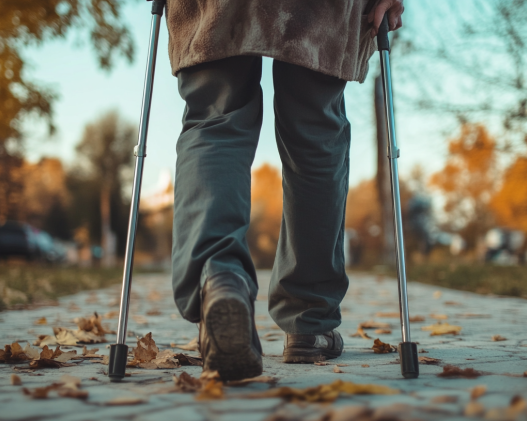Inside a newborn’s delicate body are fascinating, innate reflexes that often surprise parents with their cuteness and usefulness. Known as primitive reflexes, these automatic actions are hardwired into every baby’s system from birth, waiting to be activated. These reflexes not only serve important survival purposes but also provide endless opportunities for bonding and play. As babies grow, these reflexes gradually give way to more controlled movements, but they offer an exciting glimpse into early development. Whether you have a newborn or an older baby, discovering these reflexes can be both heartwarming and fun!
Here’s a rundown of the 7 key newborn reflexes you should know about!
1. Galant Reflex (Trunk Incurvation Reflex)
The Galant Reflex, or Trunk Incurvation Reflex, happens when you place your baby in a prone (tummy-down) position and gently stroke one side of their back from the chest to the waist. In response, the baby’s trunk and bottom will curve toward the side that is being touched.
This reflex is believed to help the baby pass through the birth canal and to promote early motor development. Babies usually show this reflex from 28 weeks of pregnancy, and it remains active after birth. Typically, it lasts until the baby is around 3-6 months old. If it continues beyond 6 months, it could indicate an abnormality, and a visit to the pediatrician is recommended.

How to Trigger It:
Place your baby in a suspended prone position and gently slide your fingers down one side of their back from top to bottom. Remember to use your fingertips, not your nails, to avoid scratching their delicate skin.
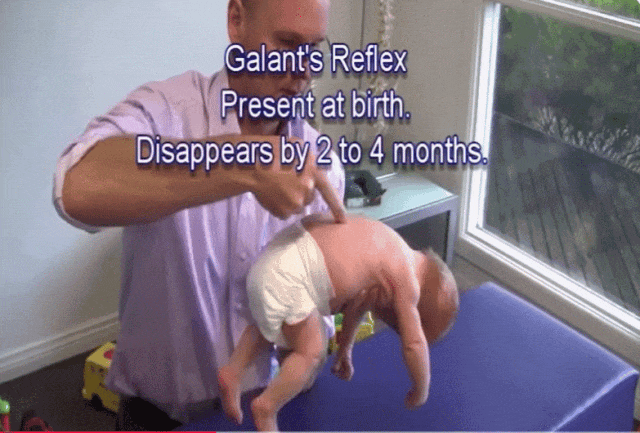
2. Babinski Reflex
The Babinski Reflex, also known as the Babinski Sign, occurs when you gently stroke the outside of a baby’s foot from the heel to the toes with a blunt object like a finger or cotton swab. In response, the big toe will extend upward, and the other toes will fan out like a flower.
This reflex is thought to protect the baby’s feet. It’s present at birth and usually lasts until the baby is 12-14 months old. If it persists beyond that, it may indicate corticospinal tract damage, and a pediatrician should be consulted.
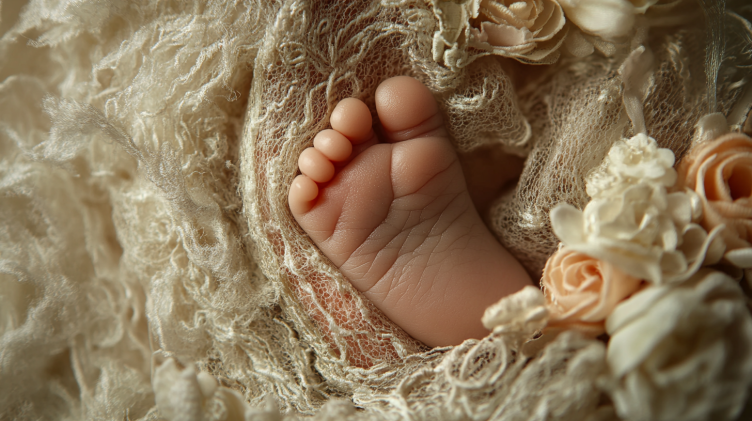
How to Test It:
With a gentle touch, stroke the outer side of the baby’s foot from the heel to the toes. You should see the characteristic reaction if the reflex is present.
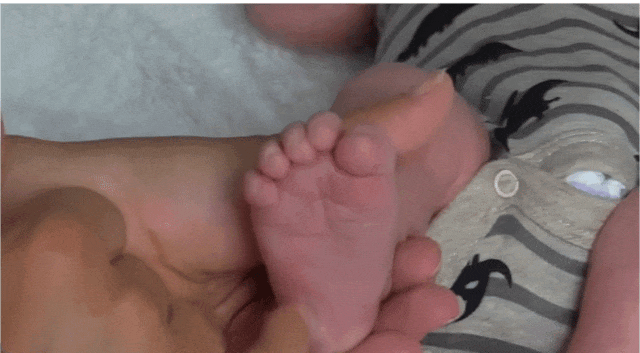
3. Asymmetrical Tonic Neck Reflex (Fencing Reflex)
The Asymmetrical Tonic Neck Reflex, also known as the Fencing Reflex, occurs when you turn the baby’s head to one side. The arm and leg on the opposite side extend, while the limbs on the side of the head bend, resembling a fencing pose.
This reflex is present in utero and remains after birth. Not every baby exhibits it, so if your baby doesn’t, don’t be concerned. It typically disappears by 3-6 months, with most babies outgrowing it by 6 months.
How to Test It:
Gently turn the baby’s head to one side, with the ear facing down, and hold the position for about 15 seconds. The reflex will likely appear within 1-6 seconds if it’s present.
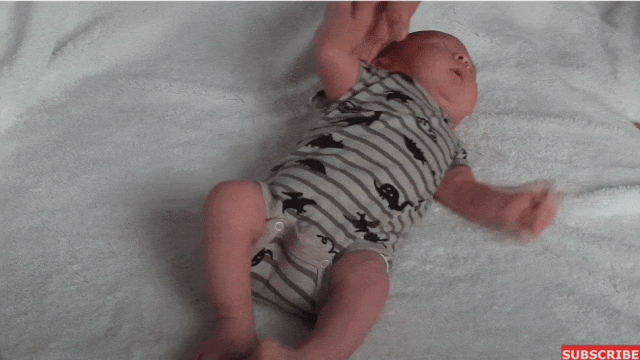
4. Rooting Reflex
The Rooting Reflex occurs when you gently touch the baby’s cheek or mouth area. The baby will automatically turn their head toward the touch and open their mouth as if trying to latch onto the breast.
This reflex is essential for helping babies find the breast and begin nursing, ensuring they receive nourishment for growth. It is present from birth and generally fades by 4-6 months of age.
How to Trigger It:
Lightly stroke the baby’s cheek with your finger. This will encourage the baby to turn their head toward the touch and prepare for feeding.
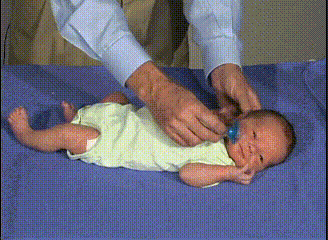
5. Moro Reflex & Startle Reflex
The Moro Reflex, also called the Embracing Reflex, occurs when there is a sudden drop of the baby’s head or shoulders. The baby’s arms will extend outward symmetrically, then gradually come back together in a hugging motion.
Both the Moro Reflex and the Startle Reflex (which is triggered by sudden loud noises or visual stimuli) are common in newborns. The Moro Reflex is caused by changes in head or body position, while the Startle Reflex is a response to sudden stimuli like noise or light.
Both reflexes typically fade by 3-6 months. If they are absent or asymmetrical, it could indicate issues like birth asphyxia or intracranial hemorrhage, and parents should consult a pediatrician.
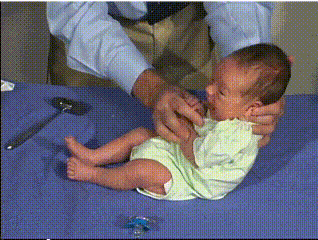
6. Palmar Grasp Reflex
The Palmar Grasp Reflex occurs when something touches the palm of the baby’s hand. The baby will instinctively grip the object. This reflex is incredibly strong in newborns and is part of their natural survival instinct to hold on to their caregiver or an object for safety.
The reflex is usually present at birth and fades as the baby grows, typically around 5-6 months of age.
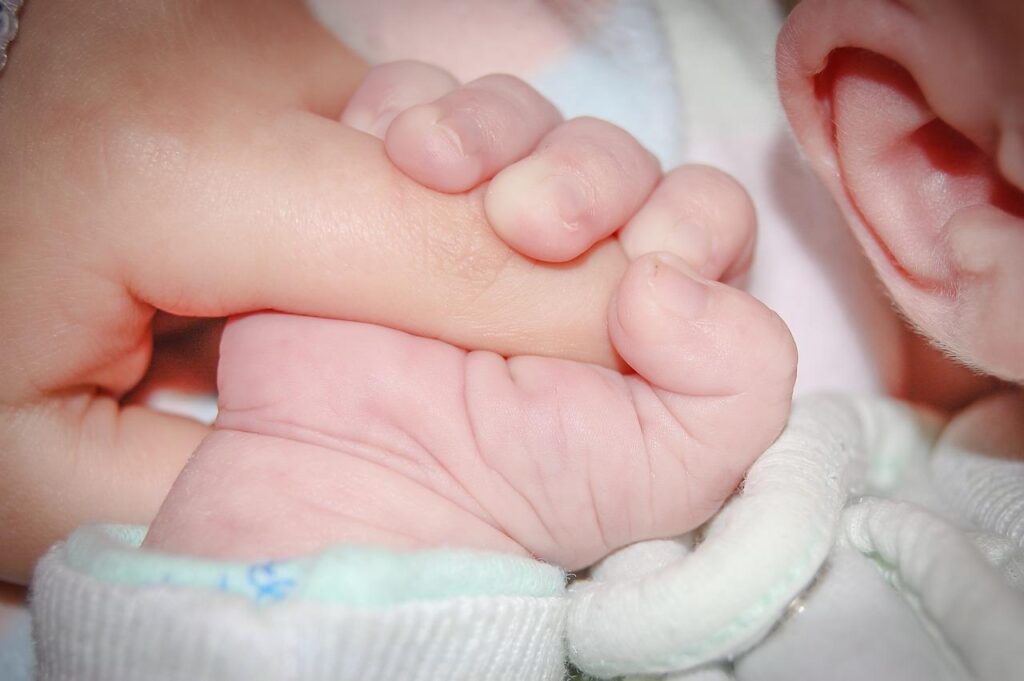
How to Trigger It:
Place your finger gently in the baby’s palm, and watch as they instinctively curl their fingers around it.
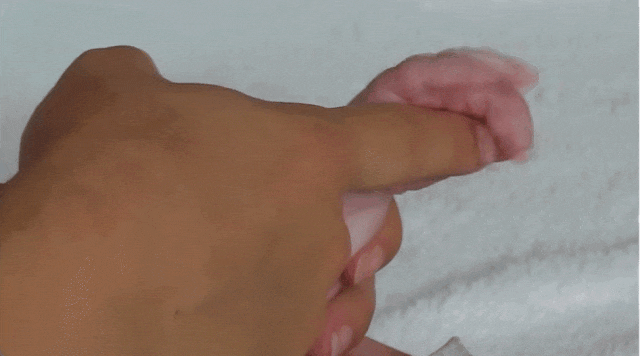
7. Stepping Reflex
The Stepping Reflex occurs when a baby is held upright with their feet touching a flat surface. In response, the baby will make stepping motions, as though trying to walk. This reflex is an early sign of motor development and is part of the baby’s preparation for future walking skills.
It is typically present at birth but fades by around 2-3 months of age. While it’s not a sign that your baby is ready to walk, it’s a precursor to future walking movements.
How to Test It:
Hold your baby upright with their feet touching a flat surface. You should see them attempt to take “steps” as they push against the surface.
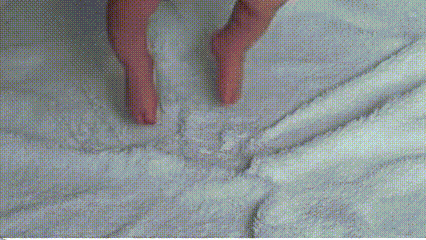
Conclusion
Newborn reflexes are a remarkable part of infant development. They serve as essential mechanisms for babies to adjust to life outside the womb and are a joy for parents to explore. Whether you have a newborn or an older baby, unlocking these reflexes can provide delightful moments and insights into their growth.
Enjoy discovering these reflexes and have fun engaging with your baby as they grow and develop. If any reflexes persist longer than expected, or if they seem to be abnormal, it’s always best to consult your pediatrician for further evaluation.













